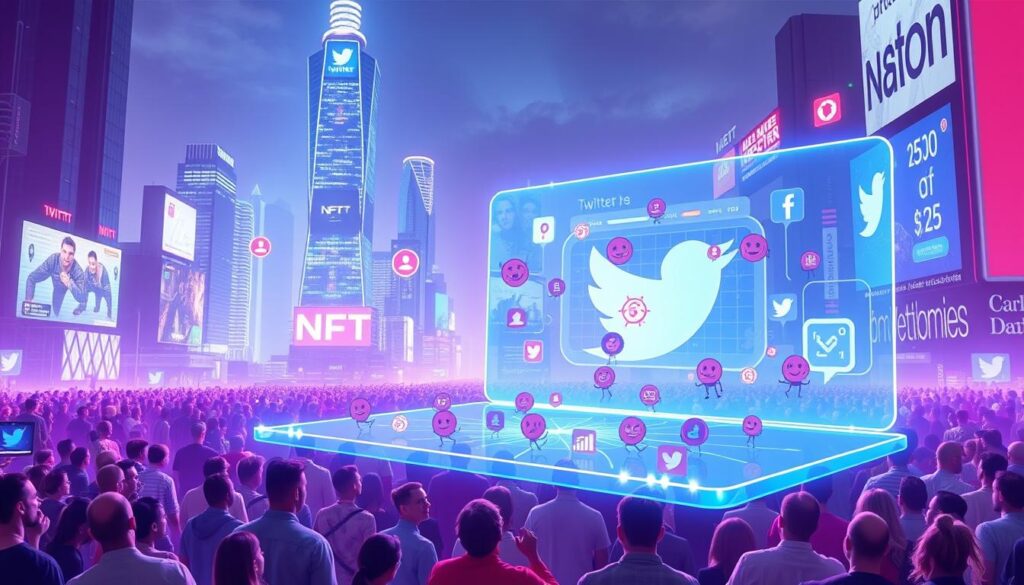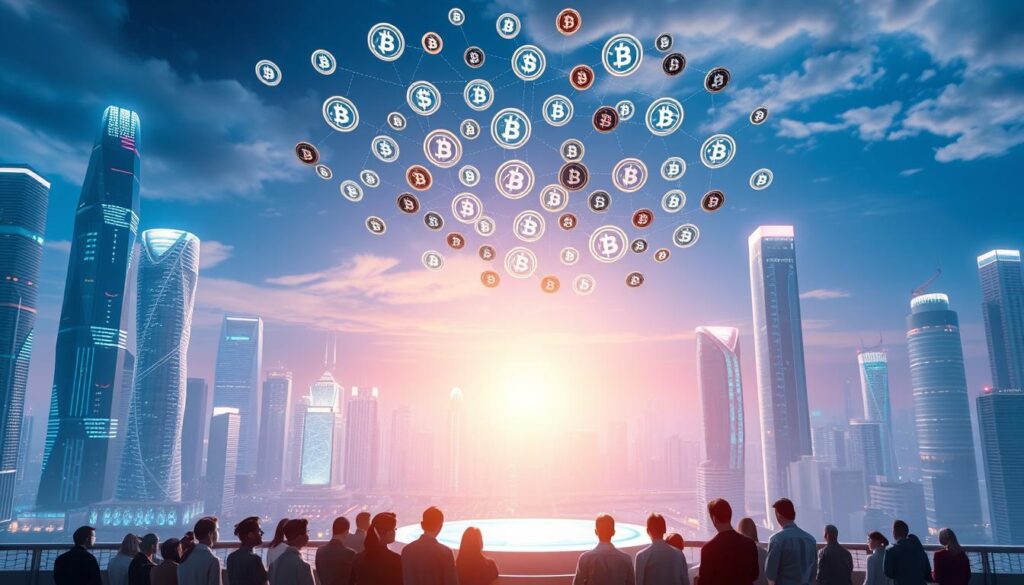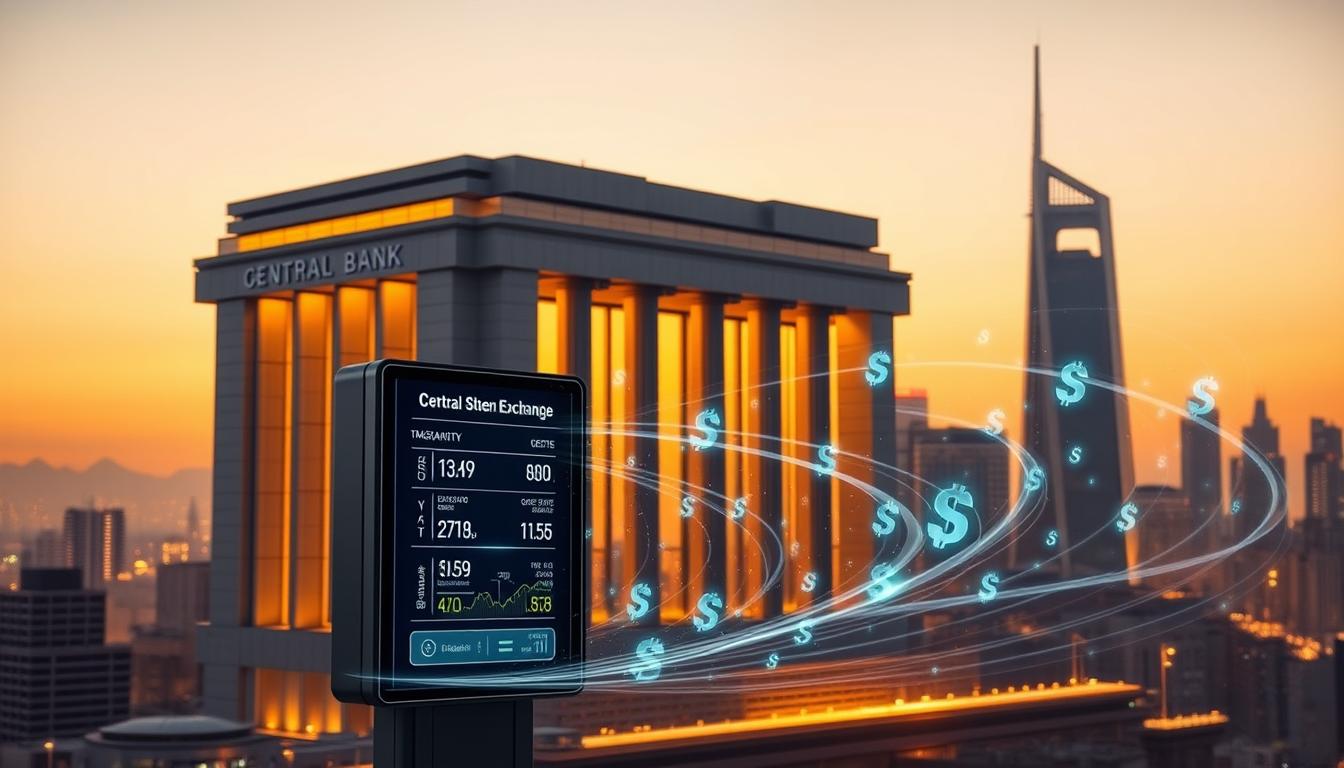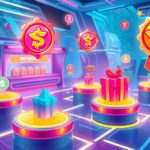Now Reading: How to Get Started with Non-Fungible Tokens (NFTs)
- 01
How to Get Started with Non-Fungible Tokens (NFTs)
How to Get Started with Non-Fungible Tokens (NFTs)
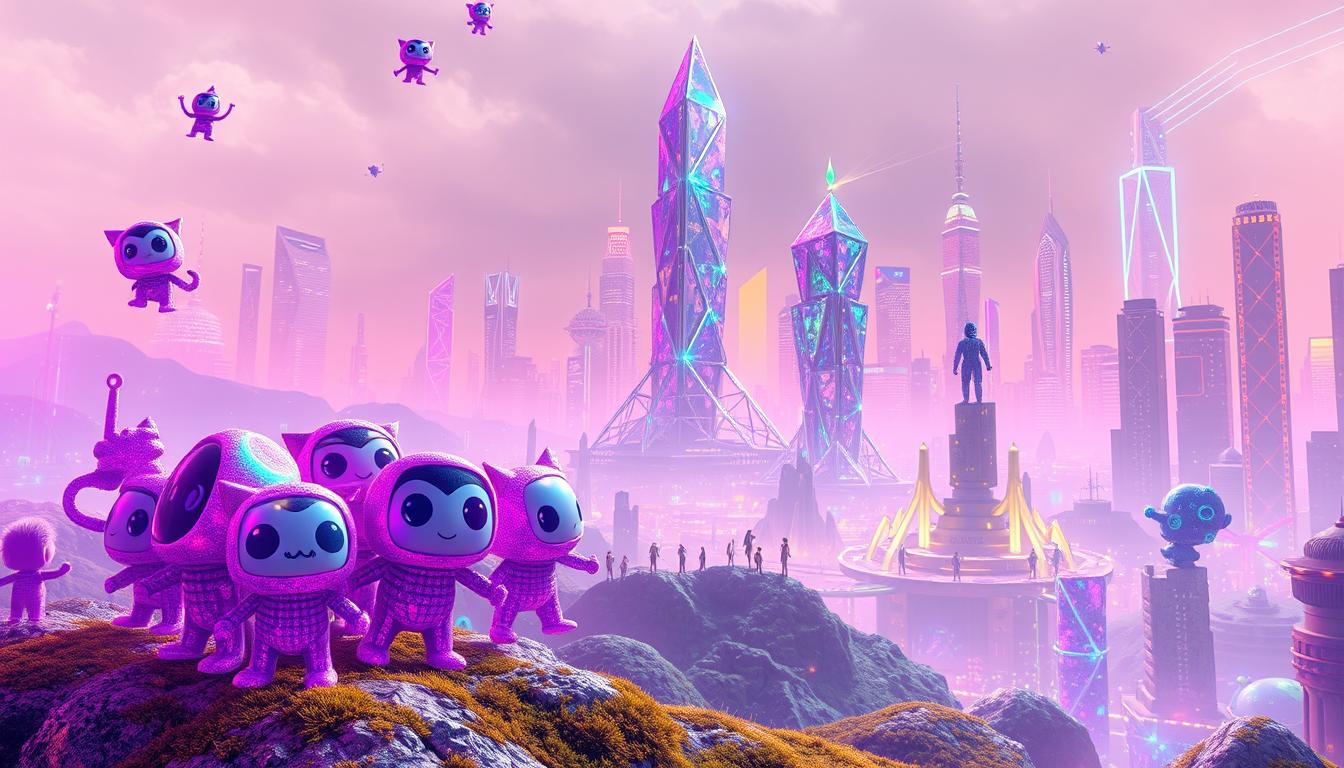
Non-fungible tokens, or NFTs, have gained significant attention in recent years due to their unique ability to represent ownership of digital assets. This concept has become a focal point in the world of digital collectibles and art, leveraging blockchain technology to create a secure and transparent way to buy, sell, and trade unique digital items.
As the use of blockchain technology continues to grow, NFTs are becoming increasingly important in the digital world, allowing individuals to own and manage digital assets with ease. The rise of NFTs has opened up new opportunities for creators, collectors, and investors, making it an exciting time for those interested in digital assets and the potential of non-fungible tokens.
Understanding the basics of NFTs and how they work is crucial for anyone looking to get started with these digital assets. With the help of blockchain technology, NFTs provide a secure and reliable way to verify ownership and provenance, making them an attractive option for those looking to invest in digital art, collectibles, and other unique items.
Understanding Non-fungible Tokens (NFTs)
NFTs have revolutionized the way we think about digital ownership, and their impact is being felt across various industries, from art to music. At the heart of this revolution is the concept of tokenization, which allows for the creation of unique digital assets that can be bought, sold, and traded like traditional collectibles. The NFT marketplace is where these transactions take place, providing a platform for creators and collectors to connect and exchange crypto collectibles.
The rise of NFTs has also led to the development of new business models, with companies like OpenSea and Rarible providing secure and transparent environments for NFT trading. These platforms utilize blockchain technology to ensure the authenticity and scarcity of digital assets, making them highly valuable to collectors and investors.
What Makes an Asset Non-fungible
An asset is considered non-fungible if it has unique characteristics that distinguish it from other assets of the same type. In the context of NFTs, this means that each digital asset has its own distinct identity, which is verified and recorded on a blockchain. This ensures that the asset cannot be replicated or exchanged for another identical asset, making it truly one-of-a-kind.
The Role of Blockchain Technology
Blockchain technology plays a crucial role in the creation, trading, and ownership of NFTs. It provides a secure and transparent way to record transactions and verify the authenticity of digital assets. This technology also enables the creation of smart contracts, which can be used to automate the transfer of ownership and facilitate the trading of NFTs.
Different Types of NFTs
There are several types of NFTs, including art, music, and collectibles. Each type of NFT has its own unique characteristics and uses, and they can be bought, sold, and traded on various online platforms. The NFT marketplace is a rapidly evolving space, with new types of NFTs being developed all the time, and tokenization is at the forefront of this innovation.
The Evolution of Digital Ownership
The concept of ownership has undergone a significant transformation with the advent of digital technologies. Decentralized ownership has emerged as a driving force behind the popularity of non-fungible tokens (NFTs). This shift has enabled creators to monetize their digital assets, including blockchain art, in a way that was previously not possible.
Some key benefits of decentralized ownership include:
- Increased control and autonomy for creators
- Transparent and secure ownership verification through blockchain technology
- New revenue streams and business models for digital assets
The rise of blockchain art and other digital assets has also led to new opportunities for collectors and enthusiasts. With decentralized ownership, buyers can now purchase and own unique digital assets, which can appreciate in value over time. As the digital ownership landscape continues to evolve, it will be interesting to see how blockchain art and other NFTs shape the future of creativity and commerce.
| Benefits | Description |
|---|---|
| Increased control | Creators have more control over their digital assets |
| Transparent ownership | Blockchain technology provides secure and transparent ownership verification |
| New revenue streams | Decentralized ownership enables new business models and revenue streams for digital assets |
Essential Tools and Requirements for NFT Trading
To start trading NFT art and crypto collectibles, it’s crucial to have the right tools and understand the requirements. Setting up a crypto wallet is the first step, as it allows you to store, send, and receive cryptocurrencies and NFTs. Choosing the right blockchain network is also vital, as different networks have different fees, speeds, and compatibility with various NFT marketplaces.
When selecting a crypto wallet, consider factors such as security, user interface, and compatibility with your desired blockchain network. Some popular crypto wallets include MetaMask, Trust Wallet, and Ledger Live. Once you have a crypto wallet, you can start acquiring your first cryptocurrency, such as Ethereum or Bitcoin, which can be used to purchase NFT art and crypto collectibles.
Setting Up a Crypto Wallet
- Choose a reputable crypto wallet provider
- Download and install the wallet software or app
- Set up a secure password and backup your wallet
Choosing the Right Blockchain Network
Research and compare different blockchain networks, such as Ethereum, Binance Smart Chain, and Flow, to determine which one best suits your NFT trading needs. Consider factors such as transaction fees, network congestion, and compatibility with NFT marketplaces.

By following these steps and understanding the essential tools and requirements for NFT trading, you’ll be well-prepared to start buying, selling, and collecting NFT art and crypto collectibles.
| Blockchain Network | Transaction Fees | Network Congestion |
|---|---|---|
| Ethereum | High | High |
| Binance Smart Chain | Low | Low |
| Flow | Medium | Medium |
Popular NFT Marketplaces and Their Features
When it comes to buying, selling, and trading NFTs, the NFT marketplace plays a crucial role. Various platforms offer different features, fees, and specialties, making it essential to choose the right one for your needs. The process of tokenization on these platforms facilitates the creation and trading of NFTs, allowing artists and creators to monetize their digital assets.
Some popular NFT marketplaces include:
- OpenSea: Known for its wide range of NFTs, including art, collectibles, and in-game items
- Rarible: A community-driven platform that allows artists to create, sell, and trade NFTs
- SuperRare: A marketplace focused on unique, single-edition digital art
These platforms offer various features, such as auctions, fixed-price sales, and bundled sales, making it easy for buyers and sellers to interact. The tokenization process on these platforms ensures that NFTs are securely stored and transferred, providing a seamless experience for users.
In addition to these features, many NFT marketplaces are now exploring new ways to enhance the user experience, such as virtual reality exhibitions and social media integration. As the NFT market continues to grow, it’s essential to stay informed about the latest developments and trends in the NFT marketplace and tokenization space.
| Marketplace | Features | Fees |
|---|---|---|
| OpenSea | Auctions, fixed-price sales, bundled sales | 2.5% transaction fee |
| Rarible | Community-driven, auctions, fixed-price sales | 2.5% transaction fee |
| SuperRare | Unique, single-edition digital art | 3% transaction fee |
How to Purchase Your First NFT
Purchasing your first NFT can be an exciting experience, especially with the security and transparency provided by blockchain technology. As you delve into the world of digital assets, it’s essential to understand the process and best practices. EvaluatingPrecise NFT value is crucial, as it helps you make informed decisions. Several factors contribute to an NFT’s value, including its rarity, demand, and the reputation of its creator.
When bidding on an NFT, it’s vital to have a clear strategy. Here are some tips to consider:
- Set a budget and stick to it to avoid overspending.
- Research the NFT’s history and previous sales to determine its value.
- Understand the fees associated with the transaction, including gas fees and platform charges.
Ensuring transaction safety is also critical when purchasing NFTs. This involves using reputable platforms, verifying the seller’s identity, and understanding the terms of the sale. By taking these precautions, you can confidently navigate the world of digital assets and blockchain technology.
Evaluating NFT Value
Evaluating NFT value requires careful consideration of various factors. The valueangle of an NFT can fluctuate over time, making it essential to stay informed about market trends and changes in demand. By understanding these factors and staying up-to-date with the latest developments in blockchain technology and digital assets, you can make informed decisions when purchasing and selling NFTs.
Building and Managing Your NFT Collection
As NFT collections grow, management becomes more complex. To curate and manage an NFT collection effectively, it’s essential to understand the intersection of NFT gaming and decentralized ownership. This intersection can enhance the experience of collecting and managing NFTs, providing a unique and immersive experience for collectors.
Some key considerations for building and managing an NFT collection include:
- Storing NFTs securely to protect against loss or theft
- Keeping track of the value of NFTs over time to make informed decisions
- Exploring NFT gaming platforms that integrate decentralized ownership to enhance the collecting experience
By understanding these considerations and leveraging the benefits of NFT gaming and decentralized ownership, collectors can build and manage their NFT collections with confidence. As the NFT market continues to evolve, it’s crucial to stay informed and adapt to new developments to maximize the potential of NFT collections.
Creating Your Own NFT Artwork
For artists and creators looking to bring their unique visions to the blockchain, creating NFT artwork can be a exciting and rewarding experience. With the rise of blockchain art and crypto collectibles, the possibilities for digital ownership and creativity are endless.
To get started, it’s essential to choose the right creation tools. This can include digital art software, 3D modeling programs, or even photography equipment. The key is to select tools that align with your artistic vision and skill level.
Choosing Your Creation Tools
- Digital art software such as Adobe Photoshop or Illustrator
- 3D modeling programs like Blender or Maya
- Photography equipment for capturing high-quality images
Once you have your tools in place, it’s time to consider file formats and standards for your NFT artwork. This can include formats such as JPEG, PNG, or MP4, depending on the type of artwork you’re creating.
File Formats and Standards
Understanding the different file formats and standards is crucial for ensuring your NFT artwork is compatible with various blockchain platforms and marketplaces.
Finally, the minting process is where your artwork becomes a unique digital asset on the blockchain. This involves creating a smart contract, setting a price, and listing your artwork on a marketplace.
Minting Process Step-by-Step
By following these steps and using the right tools and formats, you can successfully create and mint your own NFT artwork, whether it’s blockchain art or crypto collectibles.
NFT Marketing and Promotion Strategies
Effective marketing is crucial for the success of digital assets, including NFTs. To promote NFTs, creators can leverage social media platforms, online communities, and collaborations to increase visibility and demand. Tokenization can also be used as part of a broader marketing strategy, allowing NFTs to represent not just art, but any form of digital asset.
Some key strategies for NFT marketing include:
- Building a strong online presence through social media and websites
- Engaging with online communities and forums related to NFTs and digital assets
- Collaborating with other creators and influencers to expand reach and credibility
By using these strategies, creators can effectively promote their NFTs and increase their value in the market. The use of tokenization can also help to create new opportunities for digital assets and increase their appeal to a wider audience.
Overall, the key to successful NFT marketing is to understand the target audience and tailor the marketing strategy accordingly. By using a combination of online presence, community engagement, and collaborations, creators can effectively promote their NFTs and increase their value in the market.
| Marketing Strategy | Description |
|---|---|
| Social Media | Use social media platforms to promote NFTs and engage with online communities |
| Collaborations | Collaborate with other creators and influencers to expand reach and credibility |
| Tokenization | Use tokenization to create new opportunities for digital assets and increase their appeal |
Understanding NFT Smart Contracts
NFT smart contracts are a crucial component of the blockchain technology that enables decentralized ownership of unique digital assets. These contracts are self-executing, with the terms of the agreement written directly into lines of code. They facilitate the creation, buying, and selling of NFTs, ensuring that the ownership and transfer of these assets are secure and transparent.
The use of blockchain technology in NFT smart contracts provides a secure and transparent way to conduct transactions. It allows for the creation of a decentralized ownership model, where the ownership of an NFT is recorded on a public ledger, making it difficult to alter or manipulate.
Royalties and Revenue Streams
NFT smart contracts can be programmed to include royalties and revenue streams for creators. This means that whenever an NFT is sold or transferred, the creator can receive a percentage of the sale price. This feature has made NFTs an attractive option for artists and creators who want to monetize their digital work.
Contract Security Considerations
While NFT smart contracts offer many benefits, there are also security considerations that must be taken into account. The code used to create these contracts must be secure and free from vulnerabilities that could be exploited by hackers. Additionally, the use of decentralized ownership models requires a high level of trust among participants, as the ownership and transfer of NFTs are recorded on a public ledger.
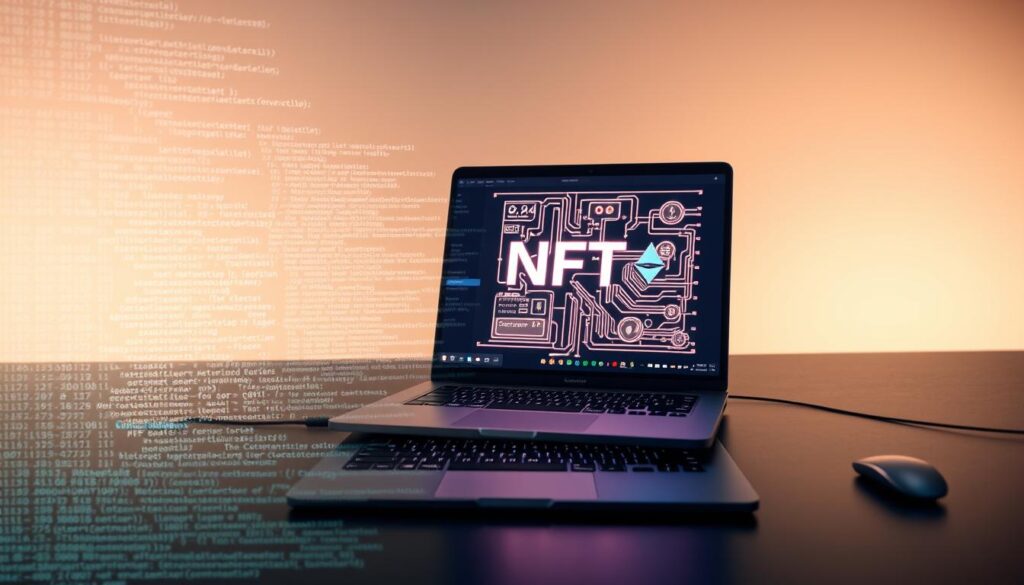
In conclusion, NFT smart contracts are a fundamental component of the blockchain technology that enables decentralized ownership of unique digital assets. By understanding how these contracts work and the security considerations that must be taken into account, individuals can navigate the world of NFTs with confidence.
NFT Gaming and Virtual Worlds
NFT gaming has emerged as a significant sector within the NFT market, offering a new level of engagement and monetization for players. The intersection of NFTs and gaming has created new opportunities for blockchain art and other digital assets to be integrated into virtual environments. As players participate in NFT gaming, they can collect, trade, and own unique digital assets, such as characters, items, and virtual real estate.
One of the key benefits of NFT gaming is the ability for players to have true ownership of their digital assets. This is made possible through the use of blockchain technology, which provides a secure and transparent way to record ownership and transfer assets. Some popular examples of NFT gaming include:
- Virtual world games, where players can create and customize their own characters and environments
- Collectible card games, where players can collect and trade unique digital cards
- Strategy games, where players can collect and trade digital assets, such as characters and items
The future of NFT gaming looks promising, with many new projects and platforms emerging. As the technology continues to evolve, we can expect to see even more innovative and engaging experiences for players.
In conclusion, NFT gaming and virtual worlds offer a new and exciting way for players to engage with digital assets and blockchain technology. With the ability to collect, trade, and own unique digital assets, NFT gaming is set to continue growing in popularity. As the sector continues to evolve, it will be interesting to see how NFT gaming and blockchain art shape the future of digital ownership and engagement.
Legal and Tax Considerations for NFT Traders
As the market for digital assets and crypto collectibles continues to grow, it’s essential for NFT traders to be aware of the legal and tax implications surrounding their activities. Copyright issues related to digital assets can be complex, and traders must ensure they have the necessary permissions or licenses to buy, sell, and trade NFTs.
When it comes to tax reporting requirements, NFT traders must understand how to report their transactions accurately. The following are some key considerations:
- Capital gains tax: NFT traders must report capital gains or losses from the sale of digital assets.
- Income tax: Traders must report income from the sale of NFTs, including any royalties or revenue streams.
- Record-keeping: Accurate record-keeping is crucial for NFT traders to ensure they can report their transactions correctly.
NFT traders can navigate these complex areas by seeking professional advice from tax experts and lawyers who specialize in digital assets and crypto collectibles. By being informed and compliant with relevant laws and regulations, NFT traders can minimize their risk and ensure a successful trading experience.
| Type of Tax | Description |
|---|---|
| Capital Gains Tax | Tax on profits from the sale of digital assets |
| Income Tax | Tax on income from the sale of NFTs, including royalties |
Common Pitfalls and How to Avoid Them
When navigating the NFT marketplace, it’s essential to be aware of potential pitfalls that can lead to significant losses. Scams and market volatility are common issues that can affect even experienced traders. To avoid these pitfalls, it’s crucial to understand the underlying Blockchain technology and its role in the NFT marketplace.
Avoiding common pitfalls requires a combination of knowledge and caution. Here are some ways to minimize risks:
- Research the NFT marketplace and the Blockchain technology it uses
- Verify the authenticity of NFTs before purchasing
- Be cautious of suspicious links or emails
By being aware of these potential pitfalls and taking steps to avoid them, NFT traders can ensure a safer and more successful experience in the NFT marketplace. As the NFT market continues to evolve, it’s essential to stay informed about the latest developments and best practices in Blockchain technology and the NFT marketplace.

Environmental Impact and Sustainability
The rise of blockchain art and decentralized ownership has led to a significant increase in energy consumption, raising concerns about the environmental impact of non-fungible tokens (NFTs). The energy consumption of blockchain networks has raised environmental concerns, with many experts calling for more sustainable practices in the industry.
Oneakte of the main issues with NFTs is their carbon footprint, which is primarily due to the energy consumption of blockchain networks. Decentralized ownership models, while innovative, require significant computational power to validate transactions, leading to high energy consumption. This has sparked a debate about the environmental sustainability of blockchain art and NFTs.
Carbon Footprint of NFTs
Studies have shown that the carbon footprint of NFTs is significant, with some estimates suggesting that a single NFT transaction can consume as much energy as a household does in a week. This has led to calls for more eco-friendly alternatives, such as the use of renewable energy sources to power blockchain networks.
Eco-friendly Alternatives
Several initiatives are underway to reduce the environmental impact of blockchain art and decentralized ownership. These includekir the development of more energy-efficient blockchain networks, the use of blockchain art platforms that utilize renewable energy, and the creation of NFT marketplaces that prioritize sustainability. Some examples of eco-friendly alternatives include:
- Using renewable energy sources to power blockchain networks
- Developing more energy-efficient blockchain protocols
- Creating NFT marketplaces that prioritize sustainability
As the NFT market continues to grow, it is essential to prioritize sustainability and reduce the environmental impact of blockchain art and decentralized ownership. By adopting eco-friendly alternatives and promoting sustainable practices, we can ensure that the benefits of NFTs are available to everyone, while minimizing their harm to the environment.
Shaping the Future of Digital Assets and Ownership
As the world embraces the transformative power of non-fungible tokens (NFTs), the future of digital assets and ownership is poised to undergo a profound shift. Blockchain technology has already revolutionized the way we think about digital ownership, and NFTs are at the forefront of this revolution. By providing a secure and transparent means of verifying the authenticity and provenance of digital assets, NFTs are set to democratize access to unique digital items, from artwork and collectibles to virtual real estate and in-game assets.
Looking ahead, the integration of NFTs with emerging technologies, such as virtual and augmented reality, will further expand the realm of digital ownership, allowing individuals to truly experience and interact with their digital possessions. The potential for NFTs to revolutionize industries like gaming, fashion, and even finance is truly exciting, as they unlock new revenue streams and empower creators and consumers alike.
As the NFT ecosystem continues to evolve, the implications for society, the economy, and culture will become increasingly profound. The ability to securely own and transfer digital assets will transform the way we perceive value, interact with digital platforms, and engage with one another in the virtual realm. The future of digital assets and ownership is indeed a captivating frontier, and the widespread adoption of NFTs will undoubtedly shape this landscape for years to come.
FAQ
What are Non-Fungible Tokens (NFTs)?
Non-Fungible Tokens (NFTs) are unique digital assets that are stored on a blockchain, providing proof of ownership and authenticity. Unlike traditional cryptocurrencies, which are fungible and interchangeable, each NFT is one-of-a-kind and cannot be replaced with something else.
How do NFTs work?
NFTs are built on blockchain technology, typically the Ethereum blockchain, which enables the creation, ownership, and transfer of unique digital assets. Each NFT contains specific metadata that distinguishes it from other NFTs, making it a verifiable and traceable digital item.
What types of digital assets can be represented as NFTs?
NFTs can represent a wide range of digital assets, including artwork, collectibles, virtual real estate, in-game items, music, and more. The unique properties of NFTs allow for the tokenization of these digital assets, enabling verifiable ownership and scarcity.
How do I create and sell an NFT?
To create an NFT, you will need to choose a blockchain network, set up a digital wallet, and then “mint” your digital asset on an NFT marketplace. Once minted, you can list your NFT for sale on the platform, where buyers can purchase it using cryptocurrency.
What are the key considerations when buying an NFT?
When buying an NFT, it’s essential to evaluate the value of the asset, understand the artist or creator, and ensure the transaction is secure. Factors like scarcity, utility, and the reputation of the NFT project can all influence the value of an NFT.
How can I store and manage my NFT collection?
NFTs are typically stored in a digital wallet connected to the blockchain network they were minted on. To manage your collection, you can use NFT-specific wallets or platforms that provide features for tracking, organizing, and even displaying your NFTs.
What are the legal and tax implications of NFT trading?
NFT trading involves complex legal and tax considerations, such as copyright issues, royalties, and capital gains reporting. It’s essential to consult with legal and tax professionals to ensure compliance with relevant laws and regulations in your jurisdiction.
How can I promote and market my NFT projects?
Effective NFT marketing involves building a strong online presence, engaging with relevant communities, collaborating with influencers or other creators, and leveraging the unique features of NFTs, such as tokenization, to create innovative promotional strategies.
What are the environmental concerns surrounding NFTs?
The energy-intensive nature of blockchain technology used in NFTs has raised concerns about their environmental impact, particularly the carbon footprint associated with the computational power required for minting and trading. However, eco-friendly alternatives and initiatives are emerging to address these concerns.
What is the future of NFTs and digital ownership?
NFTs are poised to play a significant role in the future of digital assets and ownership, with the potential to revolutionize how we think about and interact with digital content, virtual experiences, and the concept of scarcity in the digital realm. As the technology continues to evolve, the impact of NFTs on various industries and societal dynamics is expected to grow.



